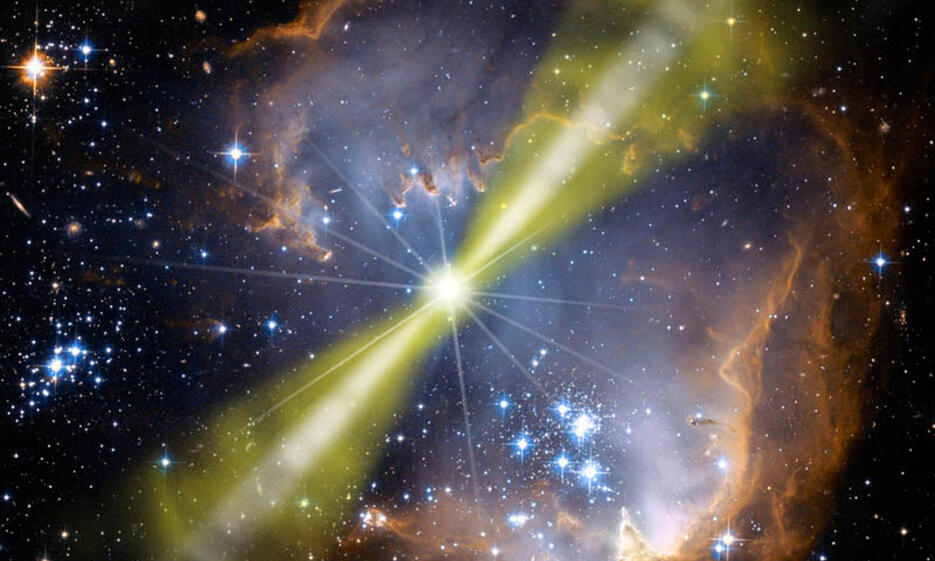For 10 years, NASA’s Fermi Gamma-ray Space Telescope has surveyed the sky for gamma-ray bursts (GRBs), the universe’s most luminous explosions. With the recently published 2nd Fermi-LAT GRB catalog (The Astrophysical Journal 878:52, 61 pages) the number of observed GRB at high-energy gamma-rays has been increased. Instead of struggling with each GRB individuality, now population aspects involving the most energetic signatures in high-energy gamma-rays can be studied Astronomers can distinguish the two GRB classes by the duration of their lower-energy gamma rays. Short bursts from neutron star mergers last less than 2 seconds, while long bursts typically continue for a minute or more. The new catalog, which includes 17 short and 169 long bursts, describes 186 events seen by Fermi’s Large Area Telescope (LAT) over the last 10 years.
Spectacular individual observations document extreme parameters among the cataloged GRBs. GRB 130427A holds the record for the most energetic individual gamma-ray photon detected from GRBs by Fermi’s LAT (94 billion electron volts traveled over 3.8 billion light-years). Another burst, GRB 160623A, spotted on June 23, 2016, kept shining for almost 10 hours at LAT gamma-ray energies. It is the longest recorded emission from such phenomenon in the catalog.
With the presented catalog insights into common aspects of the two groups of gamma-ray bursts (short and long) will be gained. The number of detected GRBs and the characteristics of the emission can be extended up to highest energies now. How particles can be rapidly accelerated to these extreme energies might be revealed more conclusively this way, helping to demystify the enigmatic gamma-ray bursts further.
This movie shows Fermi Large Area Telescope observations of GRB 080916C. About 8 minutes of data are compressed into 6 seconds. Colored dots represent gamma rays of different energies. The blue dots represent lower-energy gamma rays; green, moderate energies; and red, the highest energies.
Credit: NASA/DOE/Fermi LAT Collaboration
